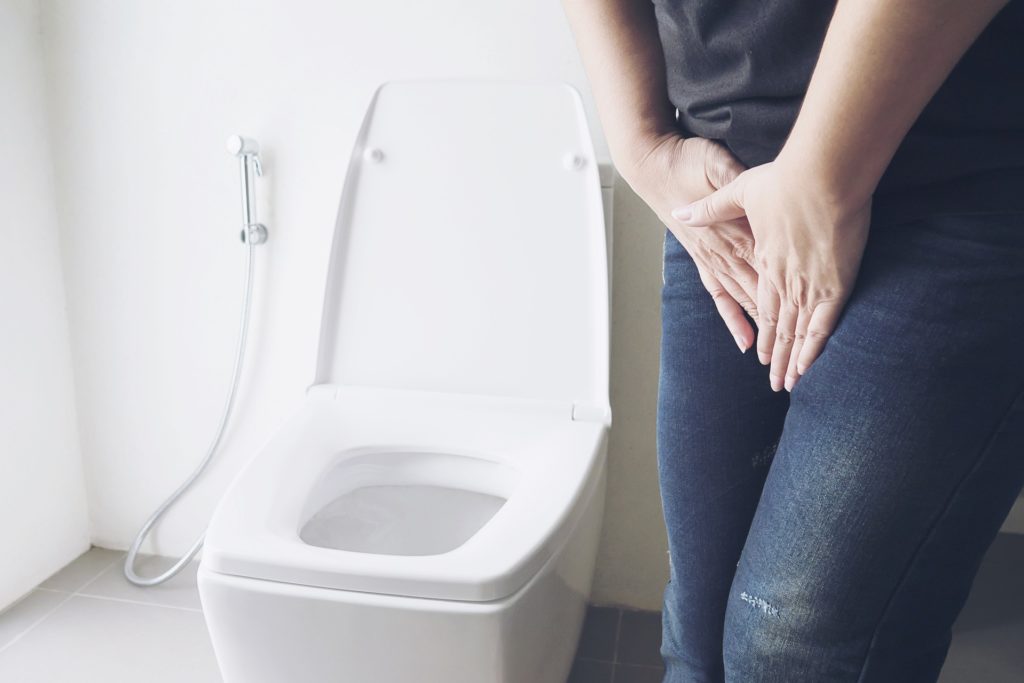Urinary tract infections (UTIs) are usually bacterial infections experienced by women. Often, E.Coli adheres to the urinary tract to cause the infection and is often treated by antibiotics. People who experience recurrent UTIs may want an alternative treatment to antibiotics. D-Mannose, a sugar found in fruits and vegetables, may be a prevention and treatment method for UTIs. It works by driving bacteria out of the urinary tract and blocking E.Coli from sticking.
Disclosure
If you are pregnant, are breastfeeding, or have diabetes, please inform yourself about D-Mannose with your doctor before consuming anything. Using D-Mannose may be beneficial for some people, and less so for others. It is a case by case basis. Also, the usage of D-Mannose in post-menopausal women has not been studied well.
What are Urinary Tract Infections? (5, 8, 12, 13, 15)
- Urinary tract infections (UTIs) are among the most common infections experienced worldwide. There are approximately 150 million recorded cases per year. The majority of UTIs are bacterial infections caused by E.Coli but may be fungal, or more rarely, viral. For this reason, the most common treatment course is to take antibiotics.
- UTIs are 30 times more common in women than men. Women are more likely to have a UTI because their urethra (i.e.: the tube connecting the bladder to the opening of the external genitals) is shorter and because it is closer to the anus. Having a shorter urethra signifies that the bacteria do not have to travel as far to cause infections.
- People with recurrent UTIs are considered to be those who experience UTIs at a frequency of at least three UTIs/year or two UTIs in the last six months. People with recurring UTIs may experience continuous discomfort and further pelvic health issues.
Symptoms of UTIs (5):
- Burning during urination
- Increased frequency and urgency of urination
- Odorous urine
- Cloudy urine
- Feeling tired and ill
- Rectal pain in men
- Pelvic pain in women
- Bloody urine (less common)
Antibiotic Treatment of UTIs (2, 4, 5, 14)
Antibiotics are often prescribed as the treatment for UTIs. They work by stopping the growth of bacteria causing the infection. Antibiotics were a crucial discovery in medicine that saved many lives. However, overuse has become an issue with approximately 47 million unnecessary prescriptions per year in the U.S.. In fact, antibiotic use may lead to negative health effects. The negative health effect may include disrupting the gut microbiome and the collection of bacteria in your gut. Each round of antibiotics destroys the good bacteria and may diminish bacterial diversity by 30%. Low bacterial diversity is associated with poor health.
Effects of Antibiotics on the Gut Microbiome (4, 10)
- Increased risk of infections
- Inflammatory and auto-immune diseases (allergies, asthma, inflammatory bowel disease, inflammatory bowel syndrome, etc.)
- Metabolic syndrome
- Diabetes
People with recurrent UTIs may take a long-term low dose or many rounds of antibiotics. Long-term usage of antibiotics may damage one’s health, in addition to, perhaps, not always being an effective treatment. Repeated antibiotic use leads to antibiotic resistance resulting in failure to stop the infection. Evidence shows that one in seven women who take antibiotics for a UTI will need another treatment after 28 days. Due to the negative health impacts of antibiotics and antibiotic resistance, people may be interested in learning about an alternative solution.
How to Prevent UTIs (1,9, 11)
The key to preventing UTIs is keeping bacteria away from your urinary tract. There are several preventative measures to take:
- Drink lots of water
- Urinate often (for those who have recurring UTIs)
- When on the toilet, wipe from front to back
- Always urinate before and after having sex
- Avoid:
- Vaginal douching
- Scented tampons or pads
- Deodorant sprays
- Scented soaps
- Bubble baths
Another prevention and treatment method is taking D-Mannose supplements. For some, D-Mannose may be effective, for others not (such as antibiotics).
What is D-Mannose? (3,7,11)
D-Mannose treats UTIs by stopping E.Coli from adhering to the urinary tract and flushing bacteria out. It is a simple sugar found in cranberries, apples, blueberries, and tomatoes, among other fruits and vegetables. Cranberry juice is recommended to people with UTIs for its D-Mannose content. However, while cranberry juice may be effective for some, it does not have enough D-Mannose to be a sufficient treatment. Research on D-mannose is very new, but may be promising based on the results of of some studies, including a systematic review:
- One pilot study compared D-Mannose to antibiotic treatment for preventing UTI recurrence. Mean time to UTI recurrence was 53 days with antibiotic treatment, and 200 days with D-mannose.
- Another pilot study evaluated D-mannose as a treatment for UTI symptoms. It showed a large reduction in all uncomplicated symptoms after 15 days. In the beginnings of this study, 88.4% of patients had a positive UTI test but after 15 days only 9.3% tested positive.
- Finally, the highest quality evidence, a systematic review has concluded that:
“Our findings support that D-mannose reduces the incidence of UTIs, improves bothersome urinary symptoms, and provides a longer time between episodes of UTI recurrence. QoL is ameliorated as a consequence of these effects. This review confirms the potential role of D-mannose as an alternative or supplementary strategy for UTI treatment.” (p.4)
Kyriakides et al., 2020
Safety & Dosage of D-Mannose (6,11)
D-Mannose may work to treat and prevent UTIs for some people, and less so for others. Since it is a supplement occurring naturally in plant-based foods, the side-effects should not be severe. In fact, at high doses, bloating and diarrhea may occur.
The recommended dose for the prevention of recurrent UTIs:
- 2 grams daily.
To treat an active UTI:
- 1 gram daily for 14 days
- 1.5 grams twice a day for 3 days, then once a day for 10 days.
It may be beneficial to experiment with dosages ranging from 1 gram to 6 grams per day or taking the supplement only when you feel symptoms arising. People who should be wary of D-Mannose include those who are pregnant, breastfeeding, or have diabetes.
Conclusion
D-Mannose may be an effective solution to prevent and treat recurring UTIs for some people. If you choose to try D-Mannose, you may consider talking to a health professional beforehand.
About the Author
Shira Charach is from Vancouver, BC. She is a Kinesiology student at McGill University. Her interests include nutrition, fitness, and wellness! You can follow her on Instagram.
References:
- Al-Badr, A., & Al-Shaikh, G. (2013). Recurrent Urinary Tract Infections Management in Women: A review. Sultan Qaboos University medical journal, 13(3), 359–367. https://doi.org/10.12816/0003256
- Centers for Disease Control and Prevention. (2020, November 13). Appropriate Antibiotic Use. https://www.cdc.gov/antibiotic-use/index.html
- Domenici, L., Monti, M., Bracchi, C., Giorgini, M., Colagiovanni, V., Muzii, L., & Benedetti Panici, P. (2016). D-mannose: a promising support for acute urinary tract infections in women. A pilot study. European review for medical and pharmacological sciences, 20(13), 2920–2925.
- Francino, M. P. (2016). Antibiotics and the Human Gut Microbiome: Dysbioses and Accumulation of Resistances. Frontiers in microbiology, 6, 1543. https://doi.org/10.3389/fmicb.2015.01543
- Lights, V. (2020, July 29). Everything you need to know about urinary tract infections. Health Line. https://www.healthline.com/health/urinary-tract-infection-adults
- Network, the H. M. (2019, May 8). Can D-Mannose Treat or Prevent UTIs? Healthline. https://www.healthline.com/health/d-mannose-for-uti.
- Porru, D., Parmigiani, A., Tinelli, C., Barletta, D., Choussos, D., Di Franco, C., Bobbi, V., Bassi, S., Miller, O., Gardella, B., Nappi, R., Spinillo, A., & Rovereto, B. (2014). Oral D- mannose in recurrent urinary tract infections in women: a pilot study. Journal of Clinical Urology, 7(3), 208–213. https://doi.org/10.1177/2051415813518332
- European Association of Urology. EAU Guidelines: Urological Infections. https://uroweb.org/ guideline/urological-infections/
- Harvard Health Publishing. (2020, September 17). When urinary tract infections keep coming back. Harvard Medical School. https://www.health.harvard.edu/bladder-and-bowel/when-urinary-tract-infections-keep-coming-back
- Lawrenson R.A., Logie, J.W. (2001). Antibiotic failure in the treatment of urinary tract infections in young women. Journal of Antimicrobial Chemotherapy, 48(6), 895–901, https://doi.org/10.1093/jac/48.6.895
- Sego, S. (2016, July 7). D-mannose: an effective antibiotic alternative. Clinical Advisor. https://www.clinicaladvisor.com/home/features/alternative-meds-update/d-mannose-an-effective-antibiotic-alternative/
- Sewify, M., Nair, S., Warsame, S., Murad, M., Alhubail, A., Behbehani, K., Al-Refaei, F., & Tiss, A. (2015). Prevalence of Urinary Tract Infection and Antimicrobial Susceptibility among Diabetic Patients with Controlled and Uncontrolled Glycemia in Kuwait. Journal of diabetes research, 2016. https://doi.org/10.1155/2016/6573215
- Tan, C. W., & Chlebicki, M. P. (2016). Urinary tract infections in adults. Singapore medical journal, 57(9), 485–490. https://doi.org/10.11622/smedj.2016153
- Ventola C. L. (2015). The antibiotic resistance crisis: part 1: causes and threats. P & T : a peer-reviewed journal for formulary management, 40(4), 277–283. https://www.ncbi.nlm.nih.gov/pmc/articles/PMC4378521/
- Affiliated Urologists. Why Women Get UTI’s More Than Men. https:// www.affiliatedurologists.com/blog/why-women-get-uti-s-more-than-men.
- Role of D-mannose in the prevention of recurrent urinary tract infections: Evidence from a systematic review of the literature. (2020). European Urology Focus, https://doi.org/10.1016/j.euf.2020.09.004





